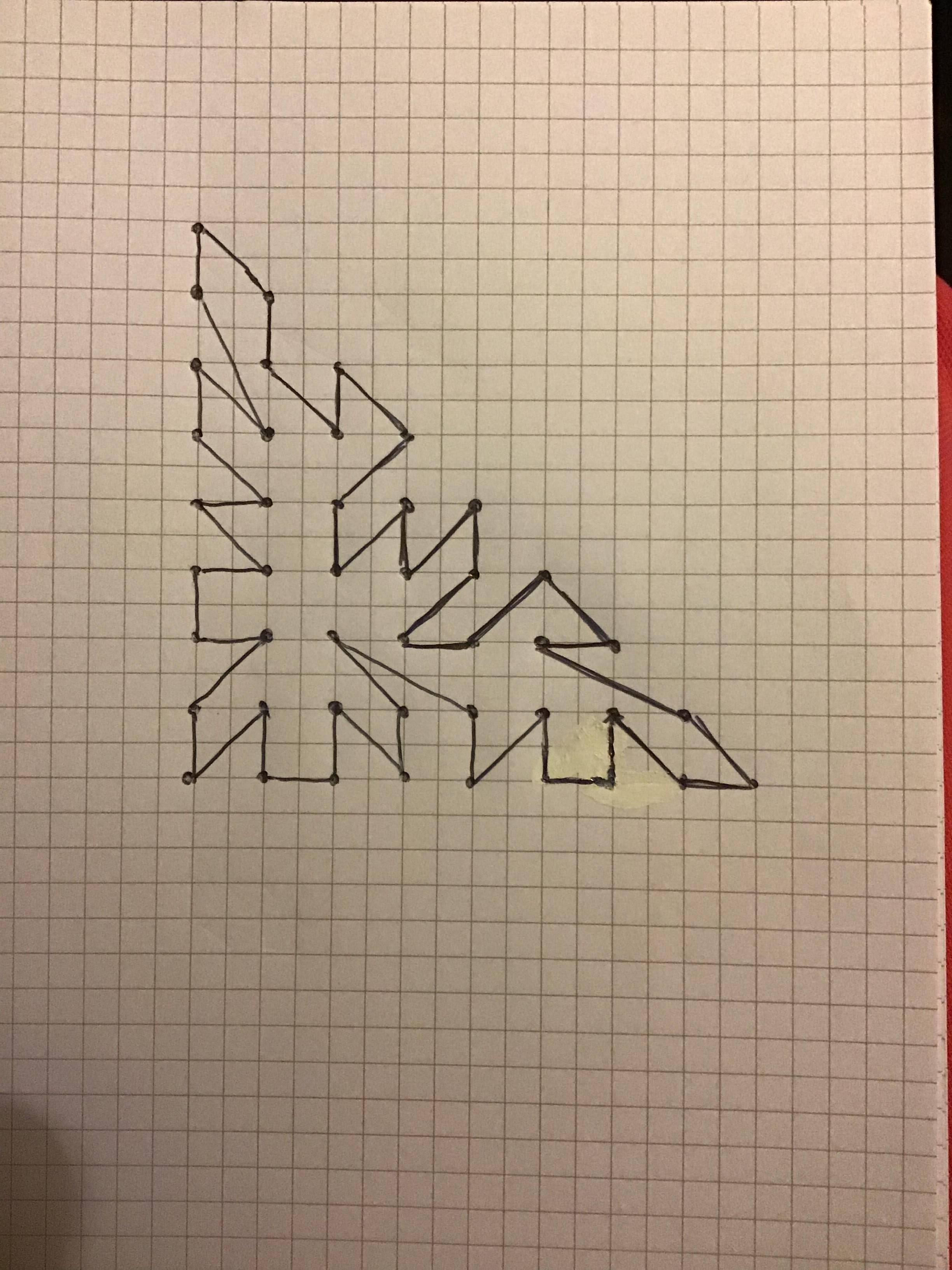Let $A$ be a finite set of points in the plane. How can we determine if there is a simple open polygonal path (i.e. without intersections), whose vertices are exactly $A$, with no straight angles between adjacent sides? Since in mathoverflow.net/q/226469/4312 question is only about cycles, the stronger question also remains. Namely - how to determine if there exists a polygon with non-intersecting sides and without straight angles, whose vertices are exacly $A$ ?
Particular interesting case is when $A$ is a set of points $(x;y)$ with $0\leq x+y \leq 2n$ , where $x,y$ are nonnegative integers. Hypothesis : no for path for $n=1$ and $n=2$.





